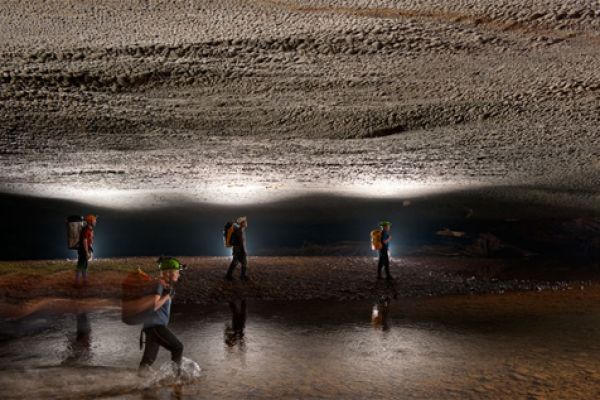Ascending to the grotto, the way is covered by trees and foliage, and consists of great paved stone blocks.

It includes two chambers; the first one being similar to a wide theatre hall. Many stalactites hang from the high ceiling, with numerous possible forms and shapes.
A narrow passage leads to the second rooms, where a flow of light meets visitors. The chamber is so immense it could contain thousands of people at one time.
At the deepest point of the grotto, a "royal garden" appears with a clear pond and a seemingly fascinating landscape of mountains. Many birds and plants (benjamin figs, cycads and centenary banyan trees) live here. On nice days groups of monkeys might arrive in search of fruit.

It is situated in the central tourism centre of the bay, as well as Ti Tup Beach, Bô Nâu Grotto, Mê Cung Grotto and Luun Grotto. French named it "grotte des surprises" (grotto of surprise)
From the wharf, you climb 50 steep stone stairs to the mouth of the grotto, which lies 25 m above the sea level. Going down some 10 stone stairs, you reach the mouth of a grotto.
The grotto covers some 10,000 m2. Inside the grotto there have thousands of stalactites and stalagmites along the 500-meter paved passage. Light posts line the passage and serve as signposts and ornaments. The lighting system with elegant styles adds more charm to the beauty of the grotto.

Up in the 30-meter roof of the grotto, one can figure out small, soft and even concave spots, which look like patterns in the ceiling of a theater. A huge piece of stone stands up to the ceiling by the grotto’s mouth. This evidences one of the typical karst-style grottoes with high scientific values.










 Tags:
Tags: 